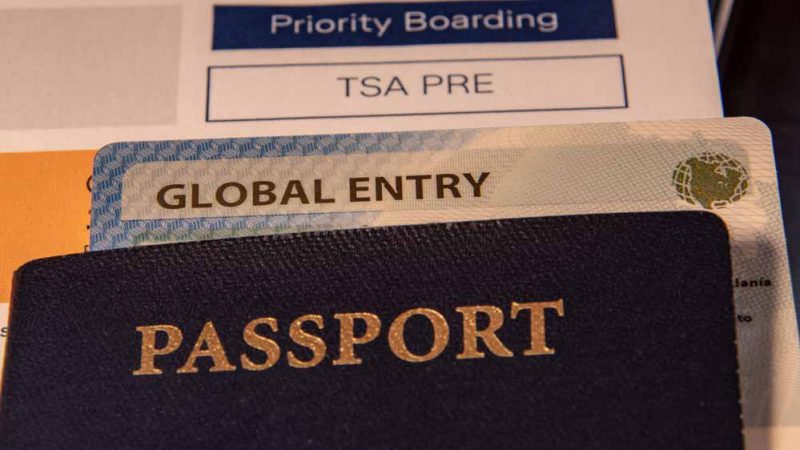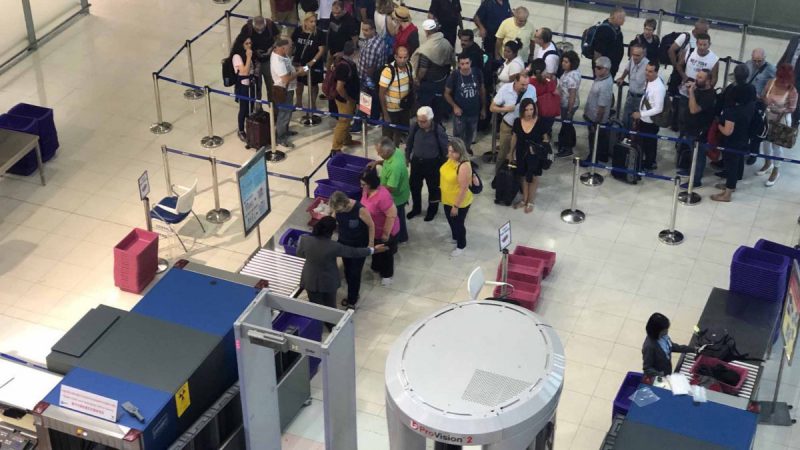Global Entry Heads South
Applying for or renewing Global Entry privileges could take as long as six months
July 8, 2019

For this author, it started with a simple email. I was given a courtesy warning by the Department of Homeland Security that my Global Entry privileges were expiring. I had been a member of Global Entry since it launched in 2008 so I was not about to let my certification slip away.
I clicked on the link to start the “re-application” process – apparently “renewals” would no longer serve – and that is when my nightmares began.
The non-intuitive, if not purposely stonewalling, website kept taking me to the same place: the wall. Perhaps our current wall-obsessed regime was finding other ways to keep travelers guessing. I would land on the spot, say three or so pages deep, where my “Trusted Traveler” ID would be requested. It would then populate fields with my passport information. If something was not right, this was the page on which to fix it.
Something was not right. My passport expiration date was listed as my birth date and that did not sit well with computer bots that somehow sensed my passport should expire 10 years after issuance, not many decades before.
So I fixed this matter and went on with the process. But the item would not correct and the field kept showing up with my birthday no matter how many times I would correct, save and try to exit forward.
Before I started pulling my hair out I tried different browsers, different computers, different IP addresses, even different countries. Six hours of my initial looping woes and… Nada. I would be condemned to long immigration lines behind bands of sleepy children, groggy parents, mules, distracted millennials, and all the rest of the world’s travelers trying to get into the U.S. As I travel frequently, often abroad, for a living, this was not a reality I could abide.
But it was not a situation I could fix, either. Off I went to LAX, where a Customs and Border Protection office at TBIT, the international terminal, was usually open. It was late, around 10 pm, and I was trying to catch a flight to Bangkok. An officer was shooting the breeze with another gentleman. I rarely see officers actually working there but then, I do not know what “work” is for this office. I told him my problem and got what I guessed was a familiar stare before he launched into his script.
“We can’t help you here,” he said. “We are short-handed and I can tell you this… Even if you do find your way through this system you will still have to have an interview and that could take six months.”
He handed me a brochure, which he promised had all the information I needed and even a phone number I could call that would have real people answering.
While I failed to see the logic of his short-handedness as there did not seem to be any work happening in the office and I was the only customer, I did take the brochure, which did not have the promised phone number in it but did have a website – a website I had consulted during my looping day that led to more walls. He did suggest I check with the CBP inside the terminal once I landed back in the U.S. I did. Nada. “Good luck!” the inside officer offered, waving me onward.
Global Entry was a kindness bestowed upon travelers at a time when the economy was in the dryer and hackles were up over a continued threat of air-focused attacks. We were still in the code orange and red days and having a “Trusted Traveler” ID cut the lines, the waits, the inconveniences of going through security enough to make an investment of $100 for some good years of shorter wait times worthwhile. On return from trips abroad I would bypass the long, snaking queue through immigration and head to the Global Entry kiosks where I would slide in my passport, answer some questions, allow scans of my fingers for my telltale prints and be on my way, often more than a half-hour before any luggage hit the carousel. The certification also allowed me to skip the exit lines of crowds buried in their luggage with nothing to declare. Rather, I was allowed to enter a dedicated Global Entry line to get out of the airport. I was a citizen traveler and it felt good.
While the card costs $100 for five years, it came with, until now, a simple re-upping process and so, in my mind, was well worth it. However, in my current state, a $100 would not even buy me a serious conversation at the airport.
In a note to the public, the U.S. Travel Associate issued a warning in recent weeks that the CBP has been cancelling many scheduled Global Entry enrollment appointments due to the reassignment of staff to the U.S.-Mexico border. While there is no threat there per se and airlines are scrambling to re-route over the Middle East where a real threat exists, I and many U.S. travelers were supposed to feel comforted.
A CBP spokesperson said at that time that the office is temporarily reducing staff at Global Entry enrollment centers nationwide in response to the “ongoing humanitarian and security crisis on our Southwest border.”
The U.S. Travel Association criticized the decision. Executive vice president for public affairs and policy, Tori Barnes, called the Global Entry program “a critical tool for both travel facilitation and travel security.”
“Interruption of Global Entry interviews is an unsettling sign that resources for Homeland Security functions are not keeping pace with the shifting array of challenges that face the agency’s important work,” Barnes stated. “We need a broad and comprehensive national conversation about the reforms and investments that are needed to properly secure our entry points and transportation systems. It’s not just security that’s at stake, but economic growth as well.”
CBP recommended that impacted Global Entry applicants reschedule for a later date “with the expectation that availability for appointments will be limited through Sept. 30, 2019.”
I did not find this ok. I live in Los Angeles, a very crowded and impacted area for demand of this service. I sought answers from the one phone number I did have: an outside office near LAX. When I called it, I did not expect an answer. But someone did answer – accidentally. There was silence as the call was received. I shouted into the phone, hoping to be heard enough to get a “Hello.”
A startled female voice took the call – clearly, I was another broken record reciting the same problem. But something switched in her when I told her about the computer glitch. She admitted she had no ability to help me with that and, in fact, no officers in the department could …except possibly one. She hesitated, and then she transferred me.
There are times – when you just miss an having a car accident or you almost get on the wrong train or plane – and you know, in that instant, you have an angel somewhere. This was one of those times. I was connected to a woman who recognized my problem and offered to help if I could get there in an hour.
Rushed and ready, I swooped up my computer and headed off the outer wastelands of LAX and the Department of Homeland Security. When I arrived, I found a small room packed with people and families who were seemingly deadened by the process but determined to make it through. Guiltily, I by-passed the hordes and opened the door to my newfound savior: an unassuming woman in uniform sifting through a formidable pile of handwritten phone messages from frustrated trusted travelers hoping against hope to get a phone call back.
I opened my computer and we got down to business, which, I assumed, would be quick. With the officer at my side I waded into the website, taking several trials to even log in and once in, arrived right at my familiar digital wall. We corrected it … and corrected it … and watched the site just loop and loop. I was beginning to lose hope that she could help me – that this whole era of convenience would become another vivid memory of a kinder, gentler time.
Then she looked at my passport and pulled up a database on her own computer. She made a correction there and, voila! – it only took me about three or four repeated motions per step on the public website and I was through — some two hours later.
The secret, she said, was re-entering and re-entering all your data every step of the way. If the system won’t take it and won’t move you forward, just keep going over the same steps. “It takes a while for the system to register it,” she said. (And people get paid to develop websites like this, I thought). Still, in my case – she admitted there was no way I would have been able to proceed no matter how many times I looped and re-entered unless she had corrected my information inside the official database.
And while I paid my $100 I am not home free. There is still that nasty interview to go, when I will become another face in the horde at that office – which will likely not happen until 2020. But, she noted, because I started the application process before my certification expired my status would remain current for a full year.
“We’ll see,” I said, leaving the crowded office with many of the same people still waiting for their intake. “That’s depends on what glitches await next time I try to climb through customs.”
The Trusted Traveler Program’s website includes Global Entry and is running an alert warning applicants that the “extended partial government shutdown has resulted in a backlog” of applications and renewals. Global Entry applicants can try to complete their interview without an advance appointment at any of the 50 airports with a Global Entry Enrollment on Arrival program.





